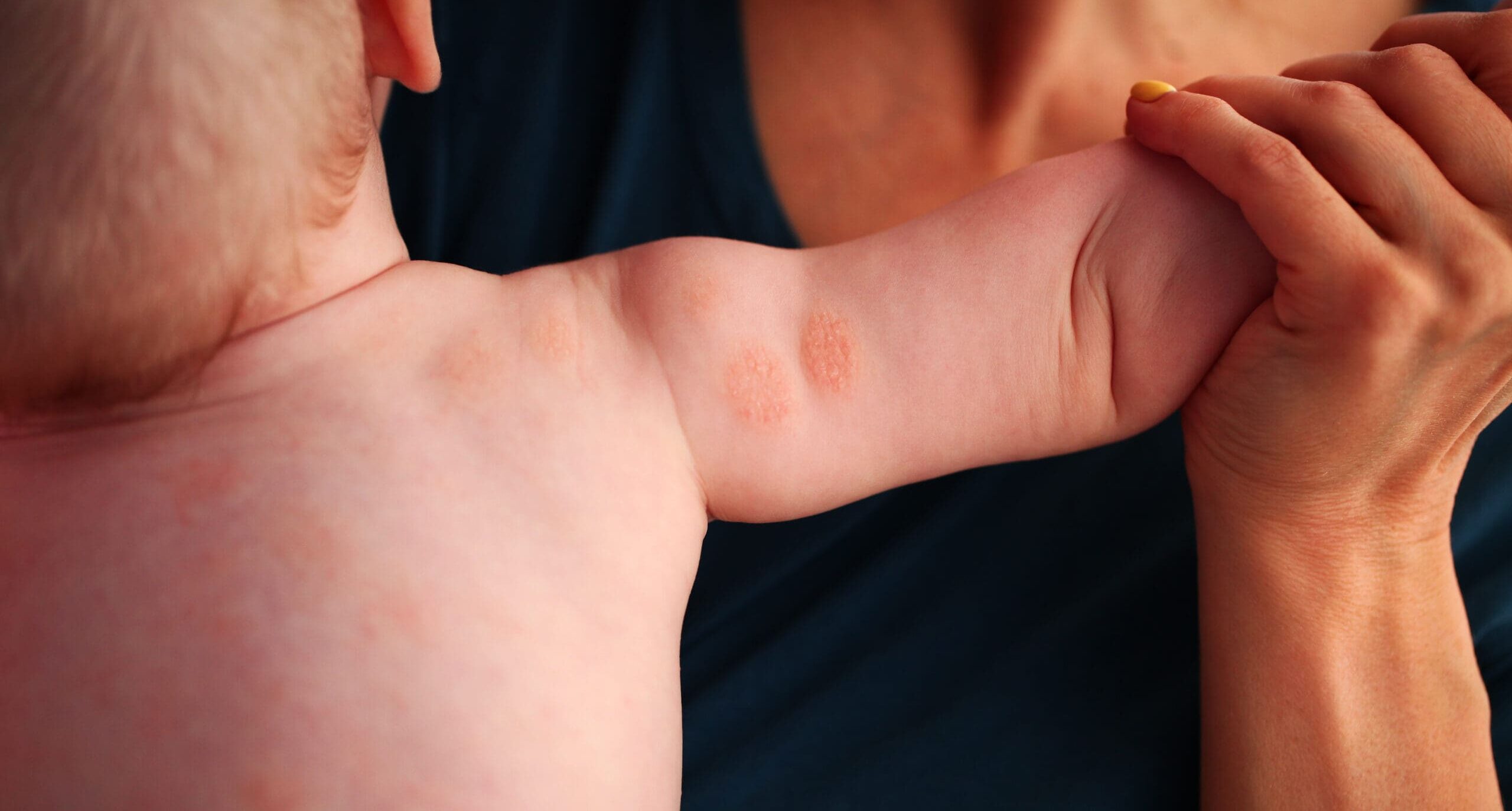Tips for helping children with eczema
By naturopath Margaret Jasinska
Eczema is extremely common in children in Australia. It is thought to affect 25 percent of children at some stage. Eczema can cause a lot of distress for children; they can scratch to the point of bleeding, don’t sleep well and their mood suffers.
Fortunately, there is a lot that can be done, which includes staying away from problem foods and skin products that irritate your child’s skin. It is also critical to support the immune system and gut flora. Some children seem to grow out of eczema, but the underlying immune dysfunction can just change form and turn into asthma, hay fever or chronic sinusitis.
Eczema causes red, itchy, and inflamed skin. In severe cases the skin can crack, become weepy and an infection can develop. Approximately 60 percent of cases develop within the first year of life. Food allergy or intolerance are common triggers of eczema in children.
What causes eczema in children?
- There are several risk factors, including:
- Not being breastfed
- Vitamin D insufficiency
- Not spending enough time playing outdoors in the soil, or with animals
- When antibiotics are given early in life
- Paracetamol use in pregnancy or early life
Babies born via C section have gut flora that resembles skin flora instead of intestinal flora. They don’t travel through the birth canal and pick up the mother’s flora on the way. The baby is handled and held by nurses and doctors, so the baby picks up microbes from hospital staff. This just means that extra help is required in establishing a healthy gut in these children.

Dairy products
Usually 80 percent of children improve once they are no longer exposed to cow’s milk protein. If mum is currently breastfeeding, she would need to remove all dairy products from her diet. If a cow’s milk formula is being used, changing it to a casein free variety should help.
Cow’s milk allergy is the most common food allergy in young children. Foods made of milk like yogurt, ice cream and cheese are also common triggers for eczema. A study of 132 children with food triggered eczema found that 39 percent developed an immediate reaction after consuming cow’s milk. A 2019 study showed that infants with eczema were six times more likely to have an allergy to cow’s milk, eggs, or peanuts at 12 months of age than infants without eczema. When doing a trial elimination of dairy products, make sure to check ingredient lists on food packages carefully for milk ingredients.

Gluten, wheat and other grains
Wheat is the main ingredient in staple foods like bread, pasta, breakfast cereals and baked goods, while gluten is a protein found in wheat, barley, and rye, which gives dough its structure and elasticity. Wheat allergy can trigger or worsen eczema and may also cause other symptoms such as hives, asthma, and digestive upsets. Eczema and skin rashes can also be due to a sensitivity to gluten, or coeliac disease. A type of skin rash called dermatitis herpetiformis is a possible symptom of coeliac disease. Blood tests and an intestinal biopsy can diagnose coeliac disease. There is no test available to diagnose non-coeliac gluten sensitivity other than an elimination diet.

Eggs
Egg allergy is one of the most common food allergies, affecting approximately 1.3 percent of children under 5 in western nations. Sensitivity to egg white is far more common than to the yolk. However, if doing a trial elimination of eggs, it’s important to avoid them entirely for the time being. Research has shown that infants with eczema are almost 6 times more likely to develop an egg allergy by 12 months of age compared to those without eczema. Fortunately a lot of children grow out of an egg allergy.

Soy
Soy allergy is becoming increasingly common. This is probably because soy is found in so many processed foods. Soy is a legume and the lectins found in legumes may trigger leaky gut in some people. Once the gut lining is leaky, incompletely digested foods can get absorbed into the bloodstream. This raises the risk of allergies and autoimmune disease. Food labelling laws have recently changed, making it far easier to identify allergens in the ingredient list.

Peanuts and tree nuts
Peanuts are a common allergen and are associated with a number of skin reactions, including rashes, hives, itching, and eczema. Peanut allergies are quite common in babies and toddlers. Most peanut allergies appear within the first 2 years of life. Sometimes peanut allergies are severe, leading to anaphylaxis, while other times they are much milder.
Tree nuts could worsen eczema for many people also. Studies have shown that tree nut allergies are very common and may affect up to 4.9 percent of children and adults. Apart from eczema, they may also be triggers of asthma and hay fever. Peanuts and tree nuts are found in many foods, and highly sensitive individuals will need to avoid foods processed in facilities where nuts are handled.
Usually a one month trial is sufficient to determine if one or more of the above foods are problematic. During this time it is best to base your child’s diet on unprocessed foods that don’t have an ingredient list, such as meat, seafood, poultry, vegetables and fruit. Legumes and gluten free grains can be tolerated well by most individuals.
Antimicrobial herbs such as clove, oregano and thyme can help reduce levels of bad gut bacteria and fungi that are often responsible for causing leaky gut. Glutamine is well known for its ability to heal and seal a leaky gut. Glutamine is the most abundant amino acid in your bloodstream and is also found in high quantities in various tissues, including the gastrointestinal tract, liver, skeletal muscle, the brain and lungs. Your small intestine uses more glutamine than any other organ. Glutamine helps to strengthen tight junctions between intestinal cells and maintains the integrity of the intestinal lining.
References:









Leave A Comment